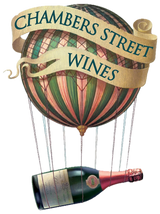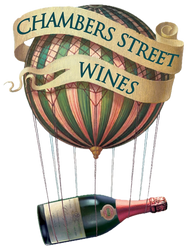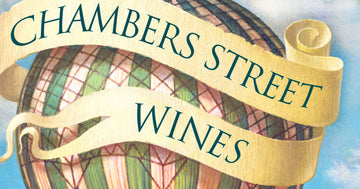A cornucopia of new arrivals from Piedmont
7/18/25 -
Here at Chambers Street Wines, our love and admiration for the wines of Piedmont is as integral to our identity and history as our love for the wines of the Loire Valley. For no particular reason besides celebrating Piedmont and trying to figure out what to do with a truckload of wines that just arrived, we've put together a collection for quick and easy browsing and ordering. Many of the Barolos are from 2021, a vintage that has been creating quite a buzz, rightly so with delicacy and balance among many hot years of power. Quantities are limited on many of these wines, so we've placed limits on how many bottles can be purchased, in the interest of giving new folks a chance to grab a bottle they've only ever heard about but never opened. We'll try to keep a few bottles for the shelf too, for those who venture out in the heat to visit our modest little boutique in Tribeca!
---------------------------------------------
BROVIA

Elena Brovia and Alex Sanchez
The 160-year-old estate was founded in 1863 by Giacinto Brovia and has operated uninterrupted since, save for a 30 year pause caused by phylloxera and world wars. The modern iteration of the estate came about when Giacinto and Raffele, grandchildren of the founder, revived the wine production in 1953. Giacinto was a trained enologist who focused on winemaking side of the business and Raffele an agronomist who was in the vineyard tending the plots. For 50 years they worked in harmony with land until they passed the reins of the estate to Elena, Giacinto's daughter, and her husband Alex.
"The more you manipulate the base material the farther you get from the land," Alex says, and it is this ideology that the duo endeavor to uphold. It is clear that this a labor of love not driven by maximizing profit, especially considering that their Freisa is planted in Villero, their Dolcetto in Brea, and Barbera in Garblet Sue. They could replant with Nebbiolo and make more Barolo but then they would lose a crucial part of what makes Piedmont's gastronomic culture so unique. Every single wine that comes out of the estate has a purity that speaks clearly the identity of the varietals and of the unique land that nurtures the vine. -Ranggy Tapia
The wines have been outstanding for a very long time, but they seem to be getting better and better; it’s an exciting time at Brovia as the younger generation builds on the foundation of quality and integrity established many years ago. Vineyard work is now entirely organic; fermentation is with indigenous yeasts, and SO2 is minimized; the aging of the wines is very old school. The Brovia wines are fantastic (and when you compare them to their peers in Barolo - the Mascarellos, G. Conterno, G. Rinaldi – still very well-priced). We have not found a better way to say it – Brovia must be counted as one of the greatest winemakers in Piedmont. -Jamie Wolff
2021: “The Best Vintage in Years” (text from Rosenthal Wine Merchants):
The 2021 vintage in the Langhe bore witness to a rare event: significant snowfall in January. Melting snow replenished the much-depleted water table in Brovia’s holdings, and the deep freeze ensured the eradication of many vineyard pests (which survive today’s regularly mild winters far more routinely than in the past), thereby setting the stage for a successful growing season. Spring brought an early-April frost which halved yields in Garblet Sue but spared Brovia’s other holdings, and a warm and dry but mercifully calamity-free summer led into ideal conditions at harvest time. Never one for hyperbole, Alex Sanchez remarked that 2021 is the best vintage for Brovia in years, and the bottled wines certainly ardently support such a claim. Cleansing and pure in their acidity, they possess dense fruit profiles clearly born of warmth but absent even a trace of excess flesh, and their vigorous tannins are firm yet elegant, amply buttressing the wines without dominating them. Furthermore, each wine displays a chiseled and finely articulated minerality with even greater intensity than usual—which, for Brovia, is truly saying something. Brovia’s 2021s showcase Nebbiolo di Barolo at its apex of complexity and longevity, and they will undoubtedly benefit from patience and restraint when it comes to cellaring.
------------------------------
TREDIBERRI

Berri is the green area on the left; Rocche dell'Annuziata and Toriglione are at the top right
Trediberri - “the three from Berri” is Federico and son Nicola Oberto, and their friend Vladimiro Rambaldi; they started operations in 2007 and released their first wines in 2012. But Federico had a long career as cellar master for Renato Ratti, and he brought the family treasure of 1.5 hectares of Rocche dell’Annuziata to the new venture. They were lucky enough to find a 5 hectare piece of the Berri vineyard, which is the base for the Barolo classico, along with 1.3 hectares around the winery in Torriglione. What can you count on is organic farming, no additives in winemaking (except very modest amounts of SO2), and a genuine desire that the finished wine be as direct an expression of its source as possible. Purity, precision, typicity, finesse - Trediberri's got it all. -Jamie Wolff
-----------------------------------
PHILINE ISABELLE

Philine Isabelle Dienger is a newcomer to the Piedmont landscape (originally from Mannheim, Germany), but her incredible passion, and her background working with Biodynamic estates throughout Europe, world-renowned pruning experts in Italy, and stints with Giuseppe Rinaldi and Giacomo Fenocchio have all led to an incredible story that we are just witnessing the beginning of! We highly recommend diving deeper by reading the detailed and thoughtful biography on the website of their New York importer, Polaner Selections. Feel free to click HERE to read more about this dynamic personality and estate!
--------------------------
CANONICA

Paiagallo, April 3, 2011 (photo: Jamie Wolff) Vines planted in 1987. No herbicides in use here!
From "Il Dottore," Jamie Wolff, in a 2011 Chambers Street Wines article:
A couple of trips each year to Piedmont have given me the chance to taste a great many wines there – and to taste them a number of times. Combine those trips with Nebbiolo Prima, the annual event staged by the producers association called Albeisa (500 to 600 current vintage wines in 5 days), and one begins to feel pretty well informed about the state of affairs in Barolo and Barbaresco. A lot of perfectly good and competent wine is made every year, but it’s not every day, or every year – or every five years – that we find a ‘new’ Barolo producer who we think may be in the same class as our short list of greats (the Mascarellos, G. Conterno, G. Rinaldi, Cappellano, Roagna, etc).
We’d heard for several years from trusted friends about Giovanni Canonica’s wine, but there were two stumbling blocks: tiny quantities, and politics; Canonica seems to share Bartolo Mascarello’s views, but going so far as refusing to send his wine to the US while our foreign policy was so – ‘Disastrous”. Fortunately, our friend Kevin McKenna (Joe Dressner and Denise Louis’ business partner) was able to persuade Canonica to meet with us, and even to make some wine available (Berlusconi’s current shenanigans being a reasonable balancing argument, apparently).
The facts: Paiagallo is a fairly small hillside vineyard at 300-400 meters – fairly high on the slope above the town of Barolo. Canonica has about 4 acres of vines, including some planted with Barbera (“for the family only”, but another great wine). So far as we can tell the only other producer to bottle a Paiagallo is Fontanafredda.
Canonica’s work is super old-fashioned in the vines, with no chemicals used aside from Bordeaux mix (copper and sulphur). In the winery the same approach: foot-pressed grapes; indigenous yeast fermentation; no temperature control; very long fermentation in wood; 2-3 rackings at first, and then just one per year after malo; aging in botte (very large old wood barrels); very minimal sulphur used throughout.
The subjective: the Barolo Paiagallo has great energy, transparency, and focus, which connect it to some of the best wines we have tasted from the region. On paper, and in the glass, it reads as true traditional Nebbiolo. In some specifics it reminds us of particular wines – the haunting black cherry fruit of Cascina Francia, the ripe but intense tannin of Bartolo Mascarello, the dance between elegance and rusticity of G. Rinaldi, the purity and energy of Cappellano. Yesterday we tasted the wines again, by coincidence in sequence with the traditional wines from a very well-regarded producer from Serralunga; those wines were good, but the Canonica was in an entirely different class and breed. The salesperson showing us the Serralunga wines was the first to acknowledge that his wares were in an unfair match-up (and today he called to say that he was “haunted by the wines”). It’s true that we don’t have a tasting history to refer to, but the wines we’ve tried have shown so well that we’re very excited - and optimistic, at least.
-Jamie Wolff, from CSW's first newsletter about Canonica in 2011



